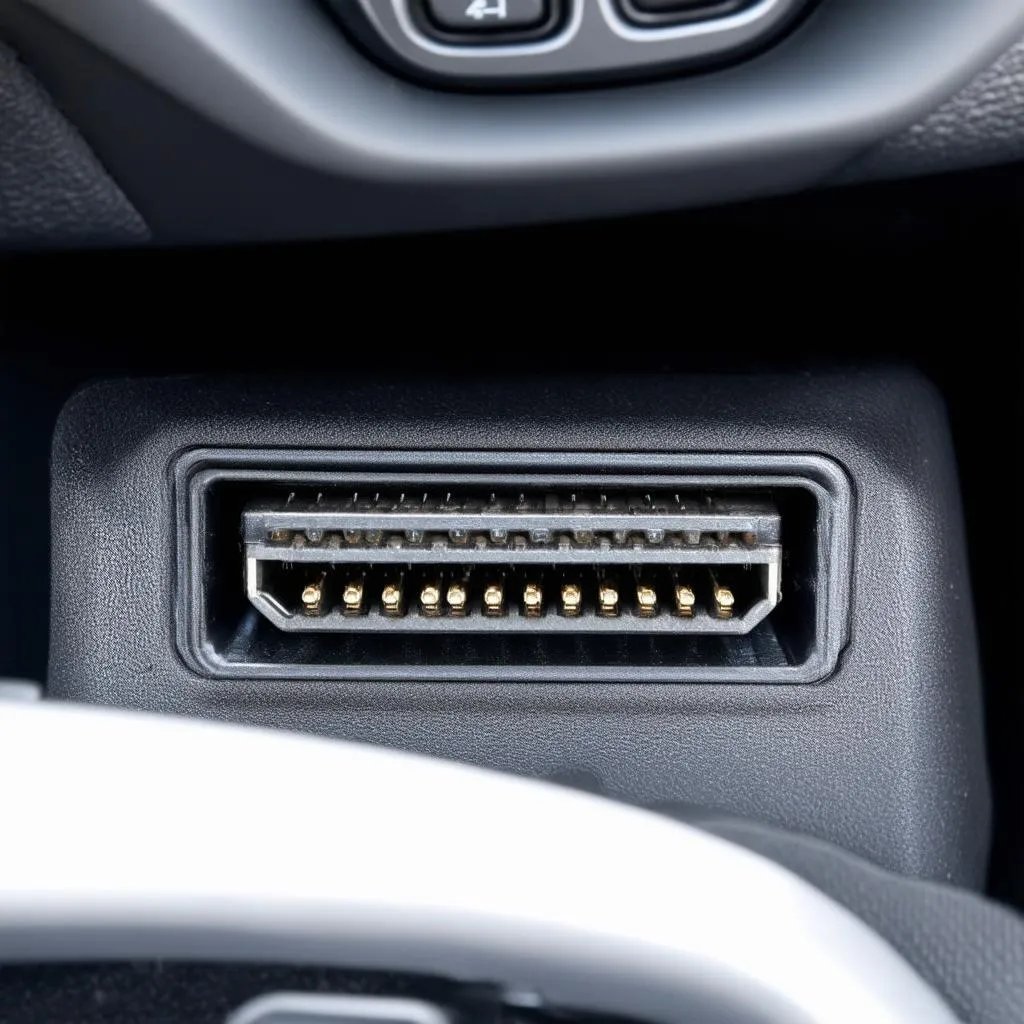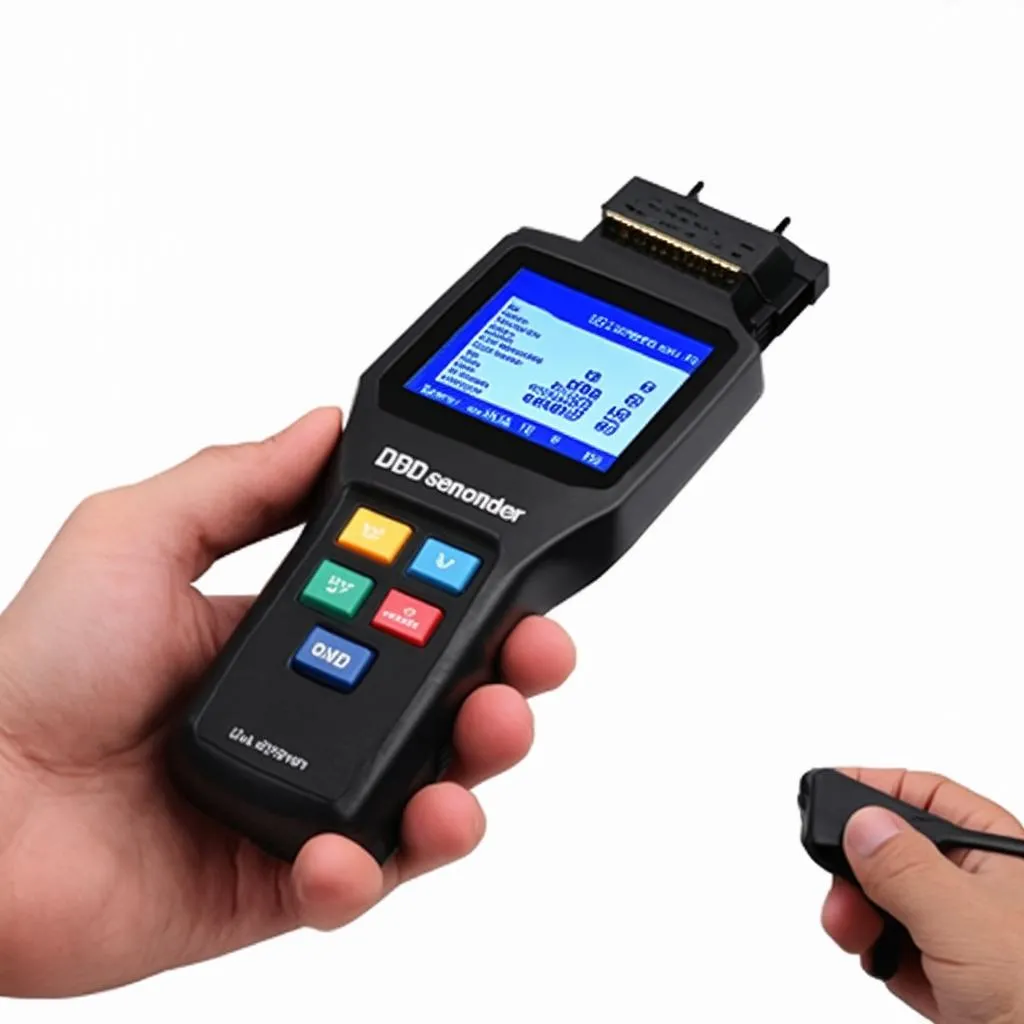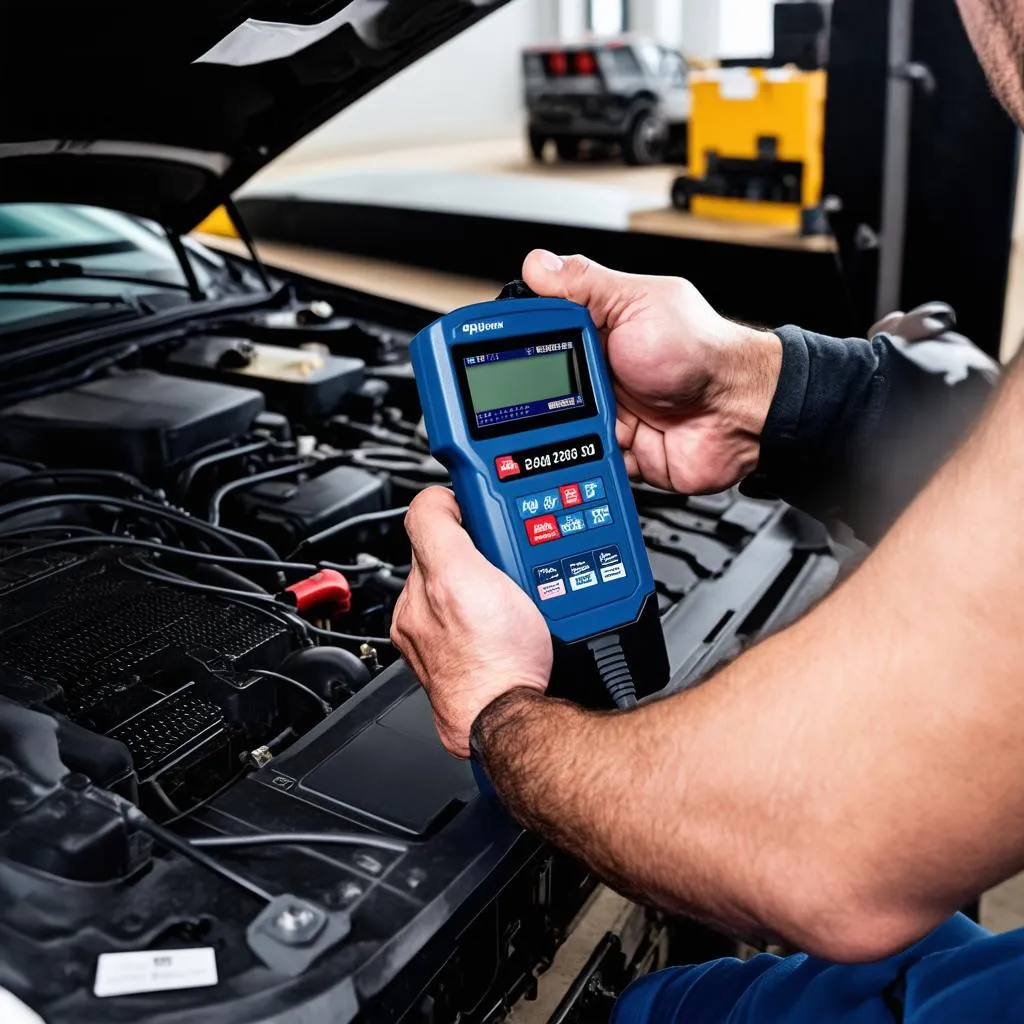Have you ever wondered what’s going on under the hood of your car? Or maybe you’ve encountered a check engine light that just won’t go away? The truth is, cars are becoming increasingly complex, and diagnosing problems can be a real headache. But there’s a tool that can help bridge the gap between you and your car’s internal workings: the Obd Sensor Reader.
The Meaning of Obd Sensor Reader
An OBD sensor reader, also known as an OBD2 scanner, is a diagnostic tool that plugs into your car’s OBD (On-Board Diagnostics) port. This port, often located under the dashboard, serves as a gateway to the car’s computer system. By connecting an OBD sensor reader, you can access a wealth of information about your vehicle’s health, including:
- Engine Trouble Codes (DTCs): These codes tell you about any issues detected by the car’s computer, such as a faulty sensor or a misfire.
- Real-Time Data: You can monitor various engine parameters, like RPM, fuel pressure, and temperature, giving you a real-time glimpse into your car’s performance.
- Vehicle History: Some scanners can retrieve past data, including mileage, fuel consumption, and maintenance records.
Why You Need an Obd Sensor Reader
The modern car is a symphony of complex systems, and sometimes, even the slightest hiccup can trigger a check engine light. With an OBD sensor reader, you can:
- Diagnose Engine Problems: Instead of relying on guesswork, you can identify the specific issue causing the check engine light, saving time and money.
- Save Money on Repairs: By understanding the problem, you can often resolve it yourself or negotiate fair prices with a mechanic.
- Monitor Your Car’s Health: Regularly checking your car’s data can help you identify potential issues before they become serious problems.
- Improve Fuel Efficiency: Some OBD scanners can help you optimize your driving habits to maximize fuel economy.
Different Types of Obd Sensor Readers
OBD sensor readers come in various shapes and sizes, catering to different needs and budgets. Here’s a quick breakdown:
- Basic Readers: These inexpensive readers can typically read and clear trouble codes. They are a good starting point for basic diagnostics.
- Advanced Readers: These scanners offer more features, such as real-time data monitoring, vehicle history retrieval, and sometimes even the ability to reset service lights.
- Professional-Grade Scanners: Used by mechanics, these scanners offer the most comprehensive diagnostics and often include advanced features like live data streaming and programming capabilities.
Obd Sensor Readers: A Boon for DIY Mechanics
For the mechanically inclined, an OBD sensor reader can be an invaluable tool. It allows you to delve deeper into your car’s workings, understand its limitations, and potentially even perform minor repairs yourself.
Tips for Choosing the Right Obd Sensor Reader
- Consider Your Needs: What features do you need? Are you looking for a basic scanner to read trouble codes or a more advanced device for data monitoring?
- Read Reviews: Check out what other users have to say about different OBD sensor readers to get a better understanding of their pros and cons.
- Compatibility: Make sure the scanner you choose is compatible with your car’s make and model year.
- Ease of Use: Look for a scanner with a user-friendly interface and clear instructions.
The Future of OBD Diagnostics
The world of automotive diagnostics is constantly evolving. Advancements in technology are leading to more sophisticated OBD sensor readers with enhanced features, including:
- Remote Diagnostics: Imagine being able to diagnose your car’s problems remotely, using your smartphone.
- Predictive Maintenance: OBD sensors can now predict potential issues before they occur, allowing you to schedule repairs proactively.
- Connected Cars: The integration of OBD data with connected car technology offers exciting possibilities for improved safety and efficiency.
Obd Sensor Reader: A Window into Your Car’s Soul
From a simple code reader to an advanced diagnostics tool, the OBD sensor reader has become a vital tool for car owners. It provides a window into your car’s internal workings, helping you understand its health, troubleshoot problems, and optimize its performance.
Where to Learn More
If you’re interested in learning more about OBD diagnostics, here are some resources you can check out:
- https://techcarusa.com/car-obd-port-device/
- https://techcarusa.com/ford-ka-mk1-obd-port/
- https://techcarusa.com/bmw-mini-obd-location/
- https://techcarusa.com/obd-scanner-definition/
- https://techcarusa.com/q5-obd-port/
Related Questions
- Where is the OBD port located in my car?
- What is the difference between OBD1 and OBD2?
- Can I use an OBD sensor reader to clear the check engine light?
- What are some of the best OBD sensor readers on the market?
Frequently Asked Questions
- Can an OBD sensor reader tell me why my car is making a strange noise?
- While an OBD sensor reader can provide valuable information about engine performance, it may not be able to pinpoint the cause of a non-engine-related noise. You may need a mechanic to diagnose the issue.
- Can an OBD sensor reader help me improve my car’s fuel efficiency?
- Yes, some OBD sensor readers can monitor your driving habits and provide feedback on how to improve fuel economy.
- Is using an OBD sensor reader illegal?
- No, using an OBD sensor reader is perfectly legal. It’s a tool that can help you understand and maintain your car.
Call to Action
Still have questions about OBD sensor readers? Don’t hesitate to contact us at Whatsapp: +84767531508! Our team of automotive experts is available 24/7 to provide you with support and guidance.
Let’s empower you to take control of your car’s health!
 Obd-port location
Obd-port location
 Obd sensor reader
Obd sensor reader
 Mechanic using OBD scanner
Mechanic using OBD scanner